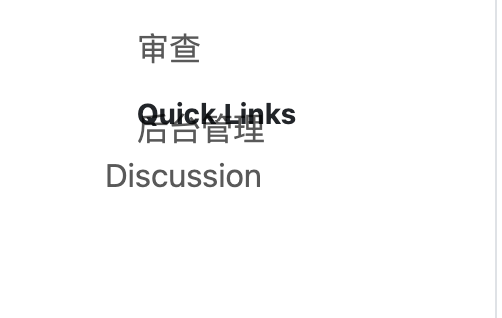Could you please post the script for the quick link navigation, as per the solution given by the community members, I found that there is a problem, it's not fixed on the side and the formatting is not right, it's not aligned.

Based on the solution given in Problem https://meta.answer.dev/questions/D1xc/how-can-i-display-quick-links-in-the-side-nav.
Thank you!